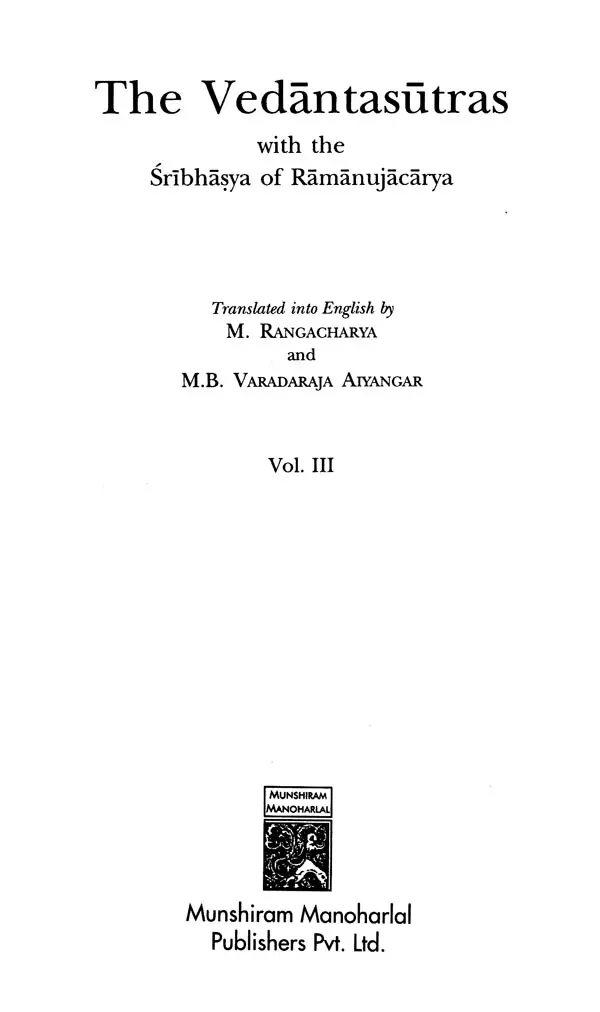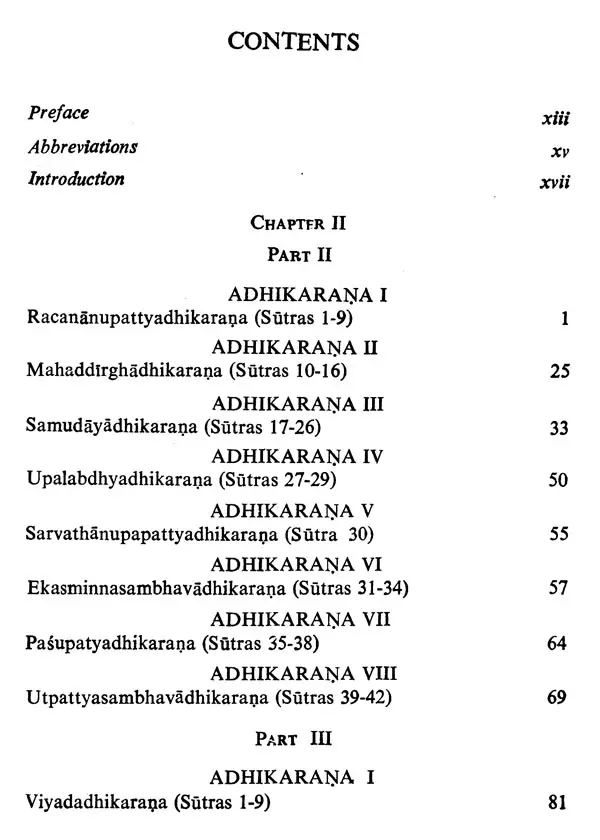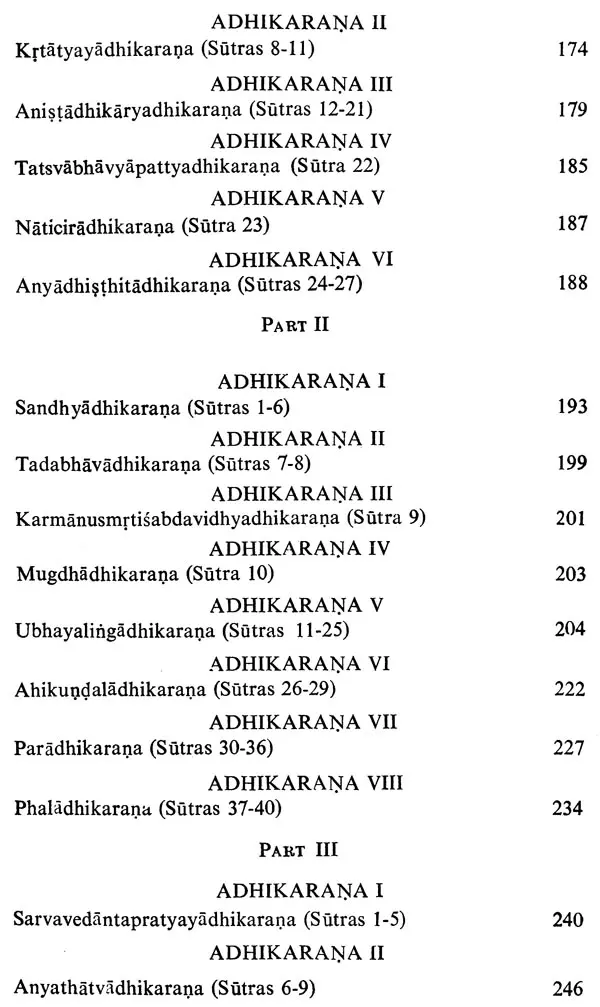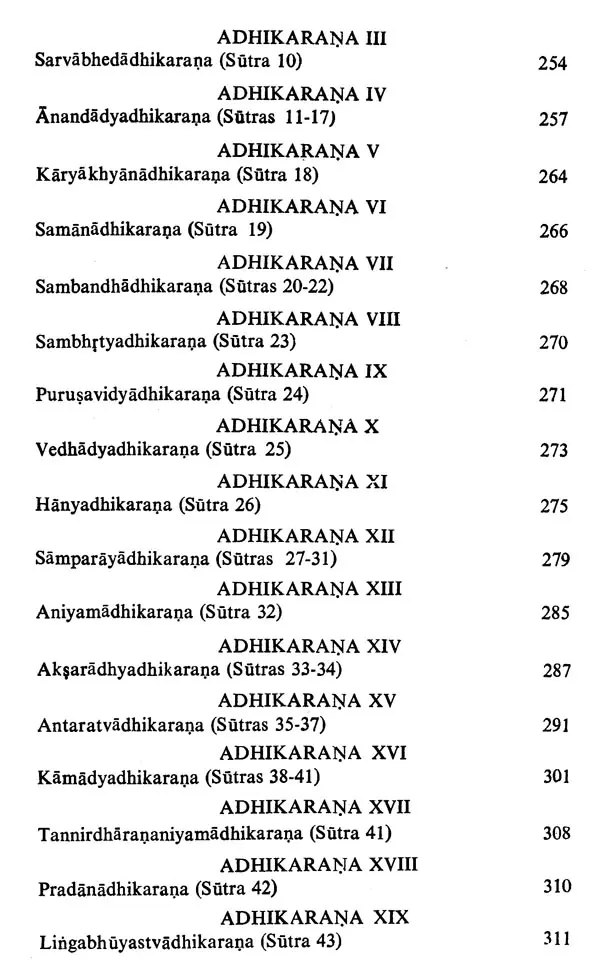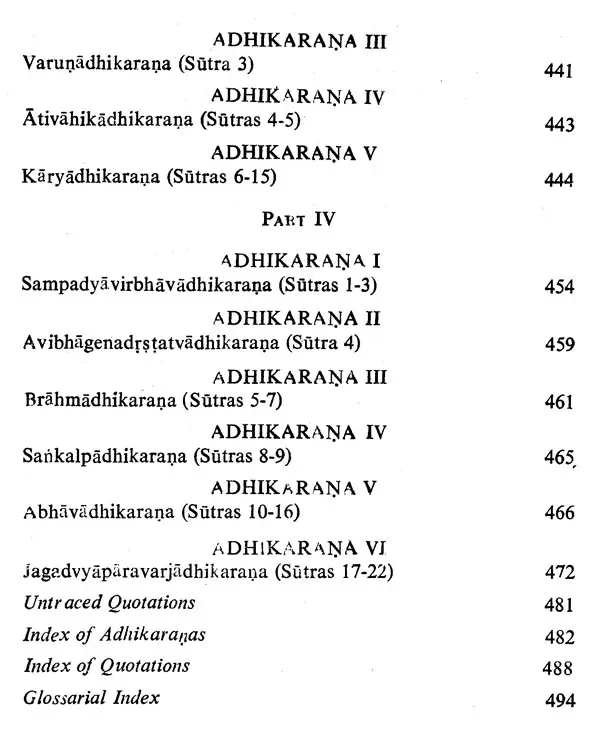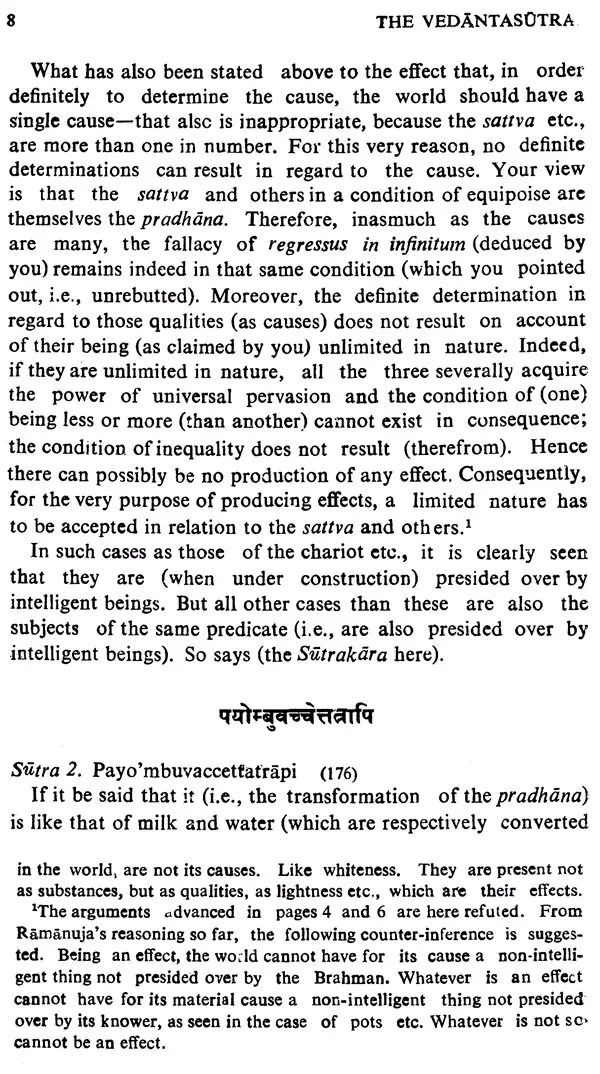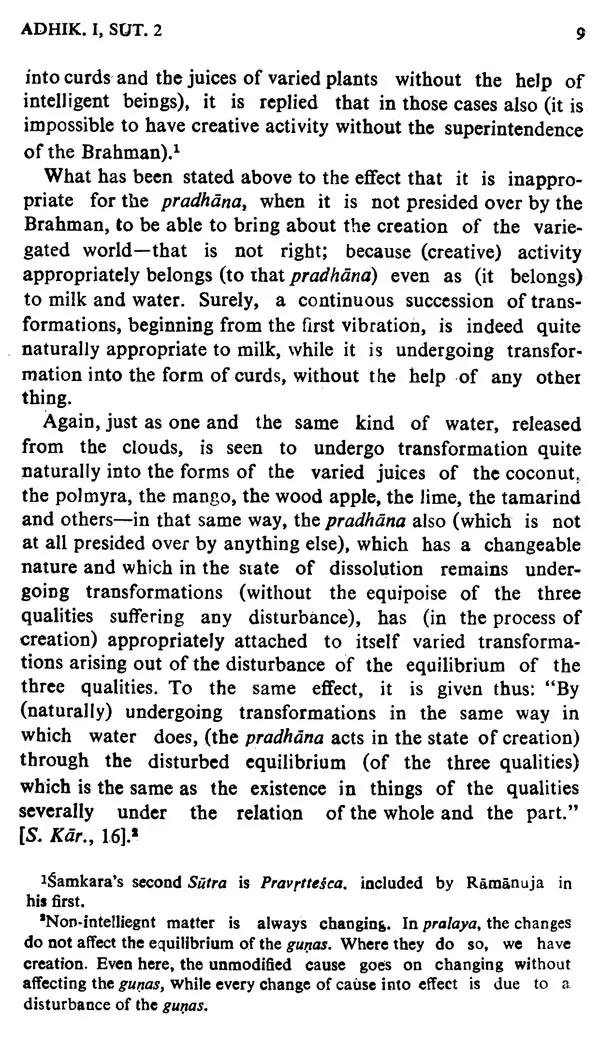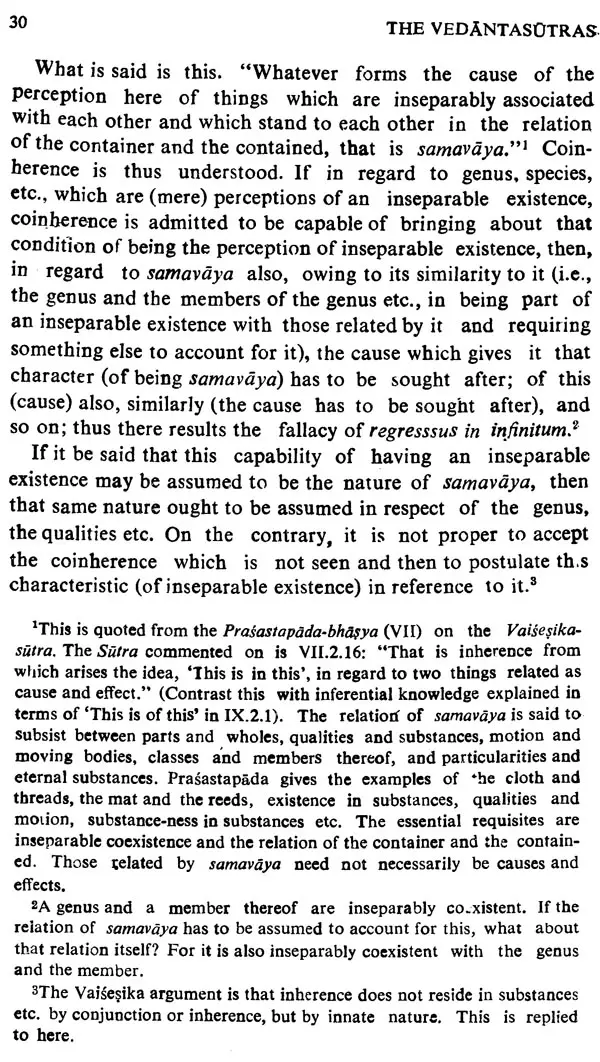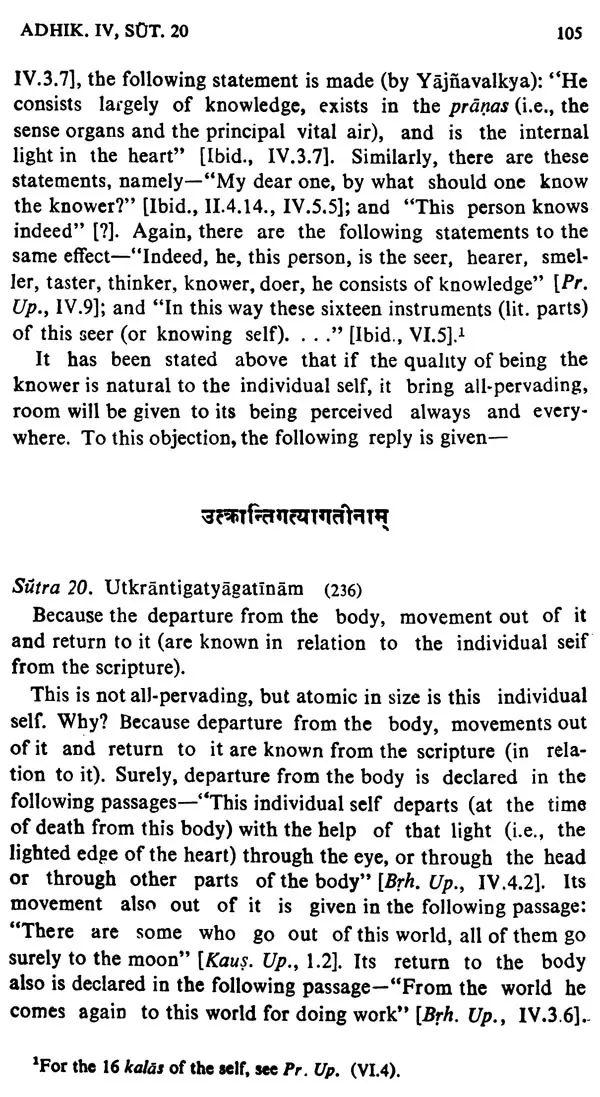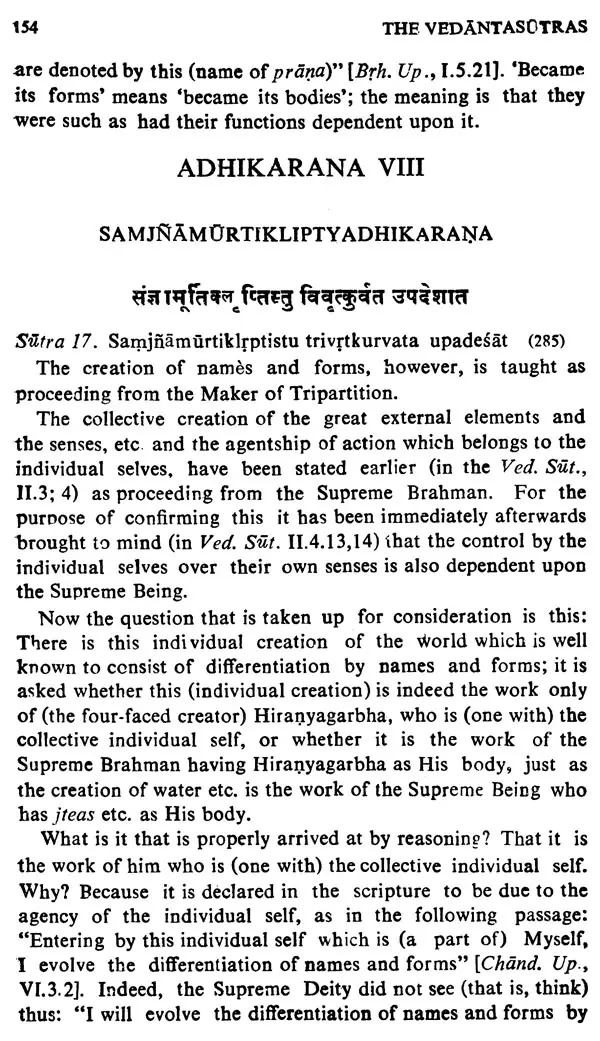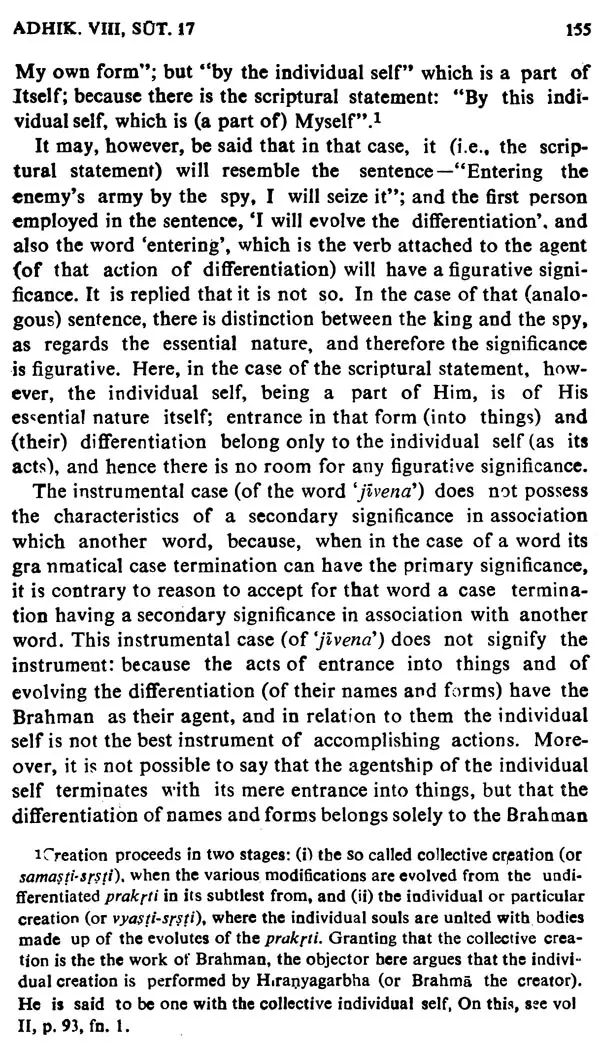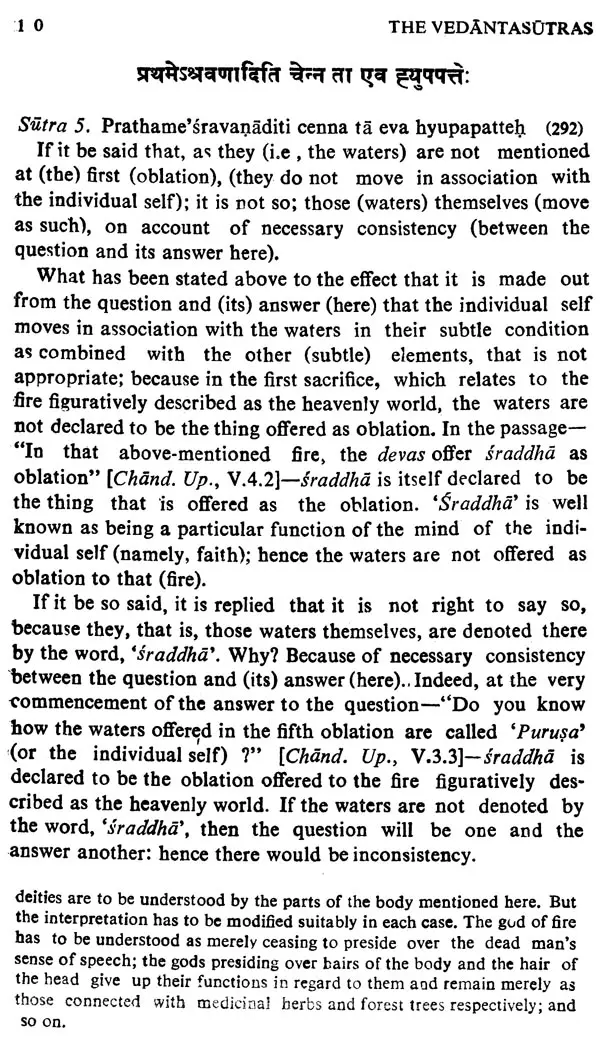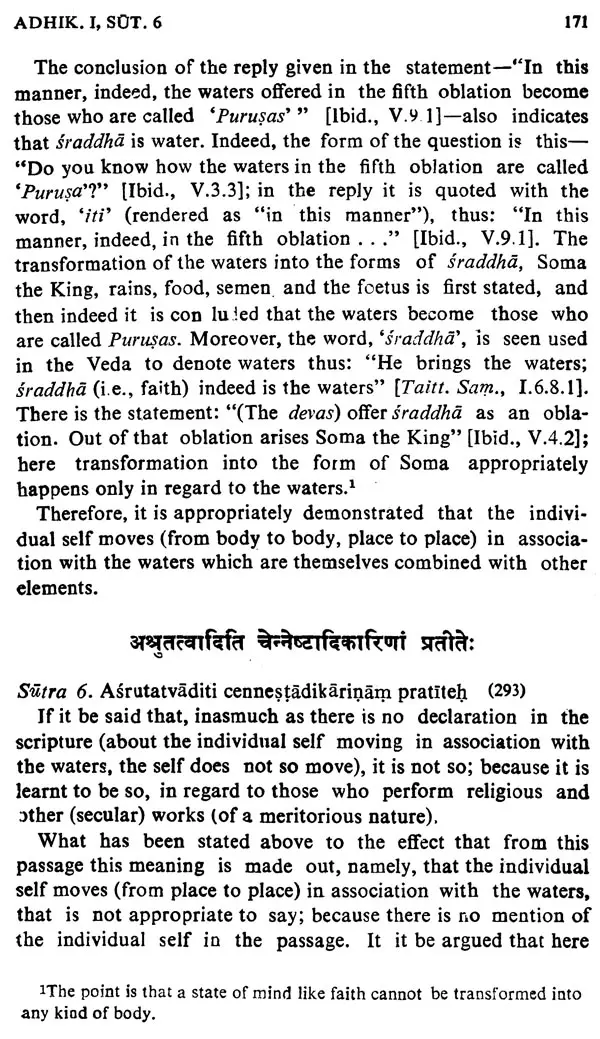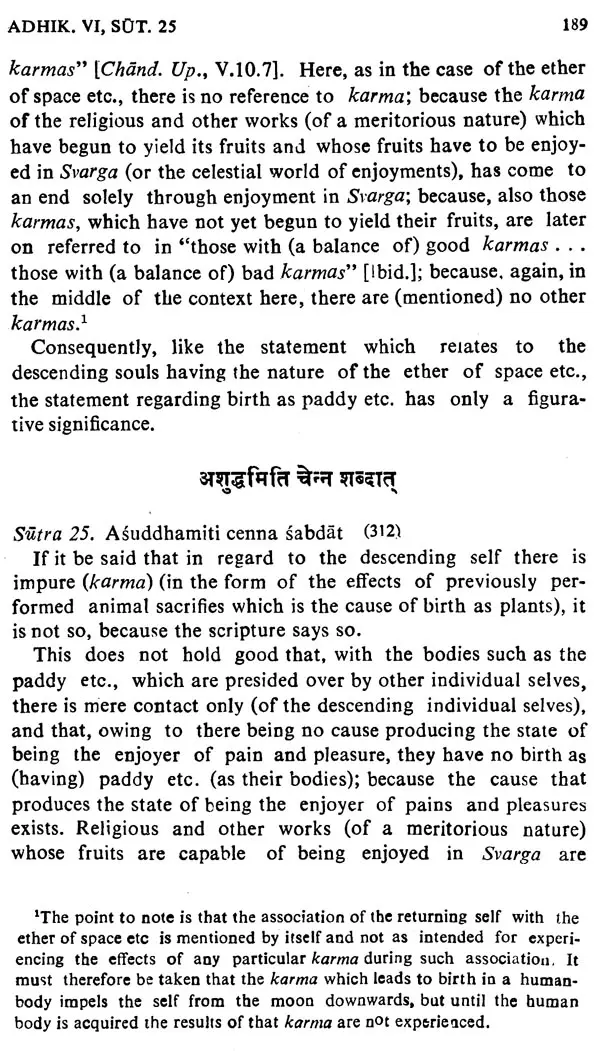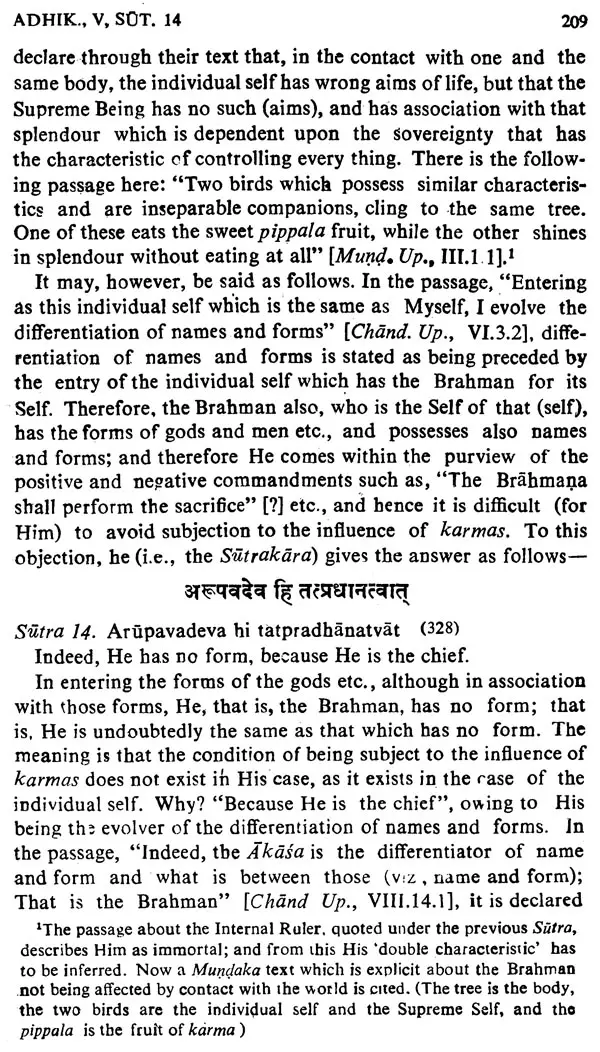
The Vedantasutras with the Sribhasya of Ramanujacarya - Volume 3
Book Specification
| Item Code: | UAQ985 |
| Author: | M. Rangacharya and M. B. Vardaraja Aiyangar |
| Publisher: | MUNSHIRAM MANOHARLAL PUBLISHERS PVT LTD |
| Language: | English |
| Edition: | 2013 |
| ISBN: | 9788121504607 |
| Pages: | 624 |
| Cover: | HARDCOVER |
| Other Details | 9.00 X 5.50 inch |
| Weight | 890 gm |
Book Description
The present work Sribhasya, is the commentary on the Vedantasutras by Sri Ramanujacarya. Ramanuja wrote the commentary in a context which necessitated not merely the exposition of the tradition he represented, but also the refutations of the viewpoints of other philosophers like Sri Samkara, Bhaskara and Yadava.
The Sribhasya has a total of 157 adhikaranas with numerous aphorisms. The present volume contains 11 adhikaranas in which Ramanuja enters with penetrating insight into the detailed study of the Vedantasutras.
According to him, the Supreme Brahman "the Highest person is the creator, sustainer and destroyer of the universe, and he is distinct from matter the soul."
It is his view that God is omniscient and omnipotent and who is wholly pure and full of all auspicious qualities. Ramanuja successfully explains the above viewpoints with his authentic exposition and interpretation of the Upanisads. The analytical outline given in the book lucidly explains all these aspects in the present volume.
M. Rangacharya (b. 1861) was Professor of Sanskrit M.B. Varadaraja Aiyangar was a close relative and associate of Professor M. Rangacharya. He assisted Professor M. Rangacharya and helped him in the translation of Sribhasya of Ramanujacarya in English and later helped Sri M.R. Sampatkumaran, son of M. Rangacharya, in bringing out the Hindu Philosophy of Conduct being Lectures on the Bhagavadgita. He passed away in 1942. In this volume Sri Ramanuja deals respectively with the "Sankhyas', the 'Nyaya-Vaisesikas', the four schools into which Buddhist philosophy is divided, the 'Jainas', the 'Pasupatas and those who reject the Panearatra' as non-Vedic. All arguments regarding the real nature of 'Brahman', and the difference between the 'Self' and the 'Brahman' are analysed. The Satras emphatically establish that the Brahman is the cause and effect of this world. He also proceeds to deal with 'Karma and Vidya' and the way to attain salvation and finally deals with the glory of the released selves. The theories of the "Sankhyas', the atomic theory of 'Nyayavaisesikas', the theory of momentariness of the Buddhists, and other atomic theories' the Jainas, theory of Syadvada and the theories of Pasupatas are criticised and logically proved in correct. In Utpattyasambhavadhikarana the Pancaratra system is dealt with. Chapter I of the Vedantasutras has declared the Brahman to be the cause of the world. Part I of chapter II has refuted the objections raised against this view. The next part sets out to rebut the views of other schools of thought about the cause of the world, so that the followers of the Vedanta, however dull or weak-willed, may not be shaken in their faith. This part consists of 42 Sutras, divided into 8 sections, dealing respectively with the Samkhya, the Nyaya-Vaisesika, the four schools into which Buddhist philosophy is divided, the Jairas, the Pasupatas and those who reject the Pancaratra as non-Vedic. The Samkhyas, being nearest to the Vedantins, are first taken up in the Racananupattyadhikarana (pp. 1-24) of nine aphorisms, given hereunder: The inferred principle (i.e, the pradhana) is not (the cause of the world), because of the impossibility of the fashioning (of the world by the pradhana without being presided Cover by the Brahman), and (because of another reason and) because also of the activity (of the pradhana when presided over by the Brahman). **Contents and Sample Pages** 